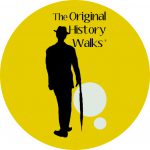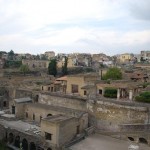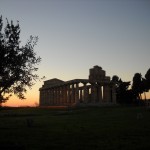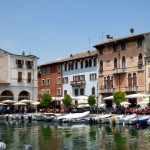Be Original, come to the Original History Walks
The megalithic face of Borzone
Is it a freak of nature or a mysterious sculpture?
I am fond of historical and archaeological mysteries, 64 km far from Genoa there is one really interesting, in the small town Chiavari. I climbed up a sort of hilltop in the Ligurian Apennines till a place that reminded me of peruvian landscapes near to the Cusco valley.
The Borzone Abbey is a perfect panoramic viewpoint and it has got a very ancient history. The old Roman sighting tower had been turned into a bell tower by the hermit friars who rebuilt it using bricks and stones. Bricks want to underline the human factor, while stones the divine one. This is an unusual place of worship: here you can find the megalithic face of Borzone. It is a face carved in the rock, 7 mt high and 5 mt wide, that seems to be staring at anyone who looks at him. Is it a freak of nature or is it a sculpture?
I usually trust in guidebooks, but I need to see things with my own eyes, to be convinced. How many things I have bumped into, how many things I can compare…
The megalithic face of Borzone
I listened to the story of how the face had been found by Armando Giuliani, from Borzonasca, in 1965. The abbot of the church confirms that this place has been a place of worship since ancient times. The famous face has always be interpreted as Jesus’ face, because of its morphological features.
According to old legends, once a year the inhabitants of Borzone used to join together in front of this sculpture, to thank gods. When the friars moved away, this tradition got lost and the sculpture got surrounded by nature and forgotten.
The architect Mr Citi has been conducting interesting researches about the mysterious carved face. He says that the face looks like the one on the Holy Shroud. Both the faces look the same to me too, when comparing the two pictures.
The historian Rita Deschmann told me this was a Celtic area and the Celts had a special cult for apotropaic human heads: there are carved faces almost everywhere around here, even on houses’ walls. Could the megalithic face be pagan?
On the other hand Pietro Gaietto, scholar of Palaeolithic sculptures, says that the head is from prehistory. It would show two opposite heads, like Giano two-faced.
A God with beard
What are the features of this face? Beard and moustache! The representation of bearded man dates back in time, before the painting of bearded God by Michelangelo in the Cappella Sistina.
Many other divinities from different part of the world have the same features: Quetzalcoatl, the plumed snake, Viracocha, that lived on the Andes. Why did hairless people as Indios use to represent bearded men? Divinities with beards come from Mesopotamia, just like the Persian bearded god Ahura Mazda, the Sumerian god Enki and Oannes half-man-half-fish. In Latin America I saw pictures like this one of Borzonasca carved in the mountains. Why do the bearded face always recur?
What about Jesus? I found out that he was hairless! No beard, no moustache, just the opposite of his typical representations! It really seems that male divinity has always been represented as specular to the feminine one, who was always pregnant, fat, with big breasts and big thighs.















